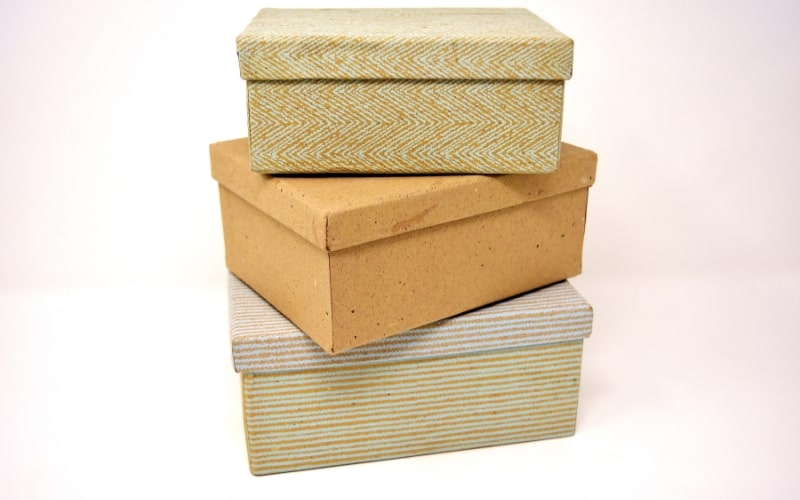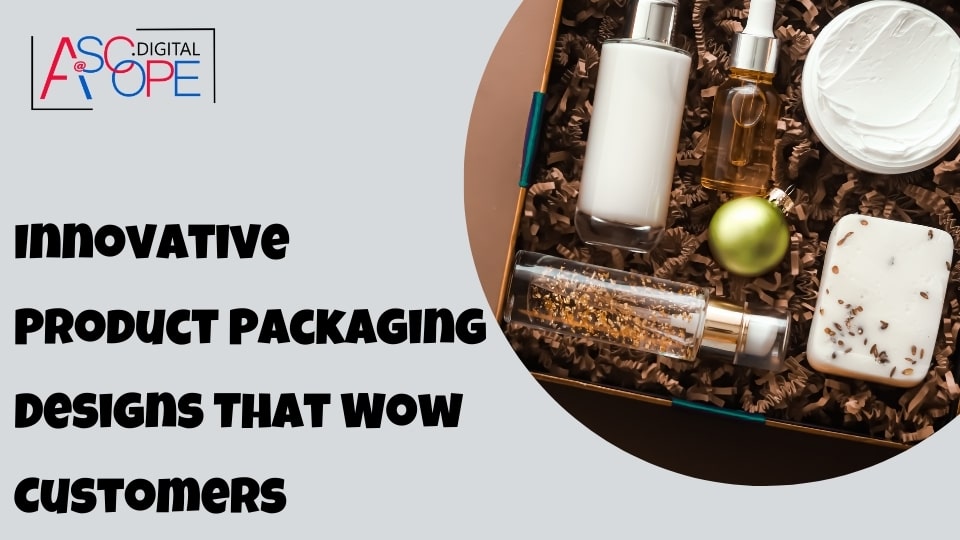Innovative product packaging designs are crucial in today’s competitive market. They serve as the first point of contact between the product and the customer, influencing purchasing decisions and brand perception. Packaging that is both functional and aesthetically pleasing can significantly enhance a product’s appeal. In this article, we explore various innovative packaging designs that have captivated customers and set new standards in the industry.
The Importance of Innovative Packaging

Innovative packaging is not just about aesthetics; it also encompasses functionality, sustainability, and the ability to convey a brand’s message effectively. Good packaging can protect the product, provide convenience to the consumer, and differentiate the product from its competitors. It plays a critical role in brand recognition and loyalty, often becoming a key factor in a consumer’s purchasing decision.
Eco-Friendly Packaging Solutions
As environmental concerns become more prominent, consumers are increasingly looking for eco-friendly packaging options. Brands are responding by using sustainable materials such as recycled paper, biodegradable plastics, and plant-based inks. For instance, companies like Pangea Organics have developed packaging made from biodegradable materials that can be planted to grow trees. This not only reduces waste but also creates a lasting positive impact on the environment.
Minimalist Packaging Designs
Minimalist packaging designs focus on simplicity and functionality. These designs often use clean lines, monochromatic color schemes, and minimal text to create a sleek and sophisticated look. Brands like Apple and Muji have mastered the art of minimalist packaging, creating an unboxing experience that feels premium and thoughtful. This approach appeals to consumers who appreciate understated elegance and quality.
Interactive Packaging
Interactive packaging engages consumers in a fun and memorable way. This can include packaging that changes color, emits scents, or even plays music. An example is the McDonald’s Happy Meal box, which can be transformed into a VR headset. Such innovative designs create a unique experience that extends beyond the product itself, fostering a deeper connection between the brand and the consumer.
Customizable Packaging
Customizable packaging allows consumers to personalize their products, making them feel more special and unique. Brands like Coca-Cola and Nutella have successfully implemented customizable packaging campaigns, where customers can have their names or custom messages printed on the packaging. This personalization enhances the customer experience and strengthens brand loyalty.
Packaging That Tells a Story
Storytelling through packaging can create a strong emotional connection with consumers. This involves using packaging to convey the brand’s heritage, mission, or the journey of the product. For example, Innocent Drinks uses playful and engaging narratives on their smoothie bottles to communicate their commitment to natural ingredients and ethical sourcing. Such packaging not only informs but also entertains, making the product more memorable.
Functional Packaging Innovations
Functional packaging innovations focus on improving the usability and convenience of the packaging. This can include resealable closures, easy-pour spouts, or packaging that doubles as a serving dish. An example is the Heinz Dip & Squeeze ketchup packet, which allows consumers to either dip their food or squeeze out the ketchup. These functional designs enhance the user experience, making the product more appealing and convenient to use.
Smart Packaging Technology

Smart packaging incorporates technology to provide additional value to consumers. This can include QR codes that provide product information, NFC tags for easy reordering, or temperature-sensitive labels that indicate the freshness of the product. Brands like Johnnie Walker have experimented with smart bottle labels that allow consumers to interact with the brand via their smartphones. Such innovations create a more engaging and informative experience for consumers.
Luxury Packaging
Luxury packaging is designed to create an opulent and exclusive feel. This often involves the use of high-quality materials, intricate designs, and sophisticated finishes. Brands like Chanel and Louis Vuitton invest heavily in their packaging to ensure that it reflects the premium nature of their products. Luxury packaging not only protects the product but also serves as a status symbol, enhancing the perceived value of the product.
Sustainable Packaging Trends
The trend towards sustainability in packaging is driven by consumer demand and regulatory pressures. Brands are adopting various strategies to make their packaging more eco-friendly, such as reducing packaging materials, using recyclable or compostable materials, and designing for easy disassembly. For example, Patagonia uses recycled materials for its clothing tags and packaging, reinforcing its commitment to environmental responsibility. Sustainable packaging not only reduces environmental impact but also resonates with environmentally conscious consumers.
Artistic Packaging Designs
Artistic packaging designs transform ordinary products into pieces of art. This involves collaborating with artists or using unique illustrations and designs to create visually striking packaging. Brands like Absolut Vodka have released limited-edition bottles featuring artwork from renowned artists. Such packaging stands out on the shelves and appeals to consumers who appreciate creativity and artistic expression.
Packaging for Online Retail
With the rise of e-commerce, packaging for online retail has become increasingly important. This includes designing packaging that is durable enough to withstand shipping while also providing a memorable unboxing experience. Brands like Glossier and Birchbox have set new standards for online retail packaging, creating designs that are both protective and visually appealing. These designs often include elements such as tissue paper, stickers, and personalized notes to enhance the customer experience.
Edible Packaging
Edible packaging is an innovative solution to reduce packaging waste. This involves using materials that are safe to eat, such as rice paper, seaweed, or sugar. An example is WikiFoods, which creates edible packaging for products like yogurt and ice cream. Edible packaging not only eliminates waste but also adds an element of fun and novelty to the product.
Packaging for Health and Wellness Products
Packaging for health and wellness products needs to convey trust and efficacy. This often involves using clean and professional designs, clear labeling, and tamper-evident features. Brands like OLLY and Ritual use transparent packaging and bold typography to communicate the purity and quality of their supplements. Such designs appeal to health-conscious consumers who value transparency and reliability.
Gender-Neutral Packaging
Gender-neutral packaging avoids traditional gender stereotypes, appealing to a broader audience. This involves using neutral colors, simple designs, and inclusive messaging. Brands like Gillette and Axe have shifted towards more gender-neutral packaging to reflect changing societal norms and appeal to a more diverse consumer base. Gender-neutral packaging is more inclusive and reflects a modern and progressive brand image.
Packaging That Enhances Shelf Life

Innovations in packaging that enhance shelf life are crucial for perishable products. This can include vacuum-sealed packaging, modified atmosphere packaging, or the use of preservatives in the packaging material. Brands like Freshpack have developed packaging solutions that extend the shelf life of fresh produce, reducing food waste and ensuring that consumers receive fresher products. Such innovations are essential for maintaining product quality and reducing spoilage.
Seasonal and Limited-Edition Packaging
Seasonal and limited-edition packaging creates a sense of urgency and exclusivity. This can involve special designs for holidays, events, or limited-time promotions. Brands like Starbucks release holiday-themed cups and packaging each year, creating anticipation and excitement among customers. Limited-edition packaging not only boosts sales but also enhances the brand’s visibility during specific times of the year.
Child-Friendly Packaging
Child-friendly packaging is designed to be safe, engaging, and easy to use for children. This can include packaging that features bright colors, playful designs, and easy-to-open features. Brands like Crayola and LEGO use packaging that is both attractive and functional for children, ensuring that it captures their attention while being safe to handle. Child-friendly packaging makes the product more appealing to young consumers and their parents.
Packaging for Subscription Services
Packaging for subscription services needs to provide a memorable unboxing experience each time. This involves using high-quality materials, thoughtful design, and personalized touches. Brands like Blue Apron and FabFitFun create packaging that feels like a gift, enhancing the customer’s experience and encouraging repeat subscriptions. Subscription packaging plays a crucial role in customer retention and brand loyalty.
Conclusion
Innovative product packaging designs have the power to captivate customers, differentiate brands, and enhance the overall consumer experience. From eco-friendly solutions and minimalist designs to interactive and customizable packaging, there are countless ways to make packaging stand out. By focusing on functionality, sustainability, and aesthetics, brands can create packaging that not only protects the product but also tells a story, engages consumers, and leaves a lasting impression. As the market continues to evolve, staying ahead with innovative packaging designs will be key to maintaining a competitive edge


